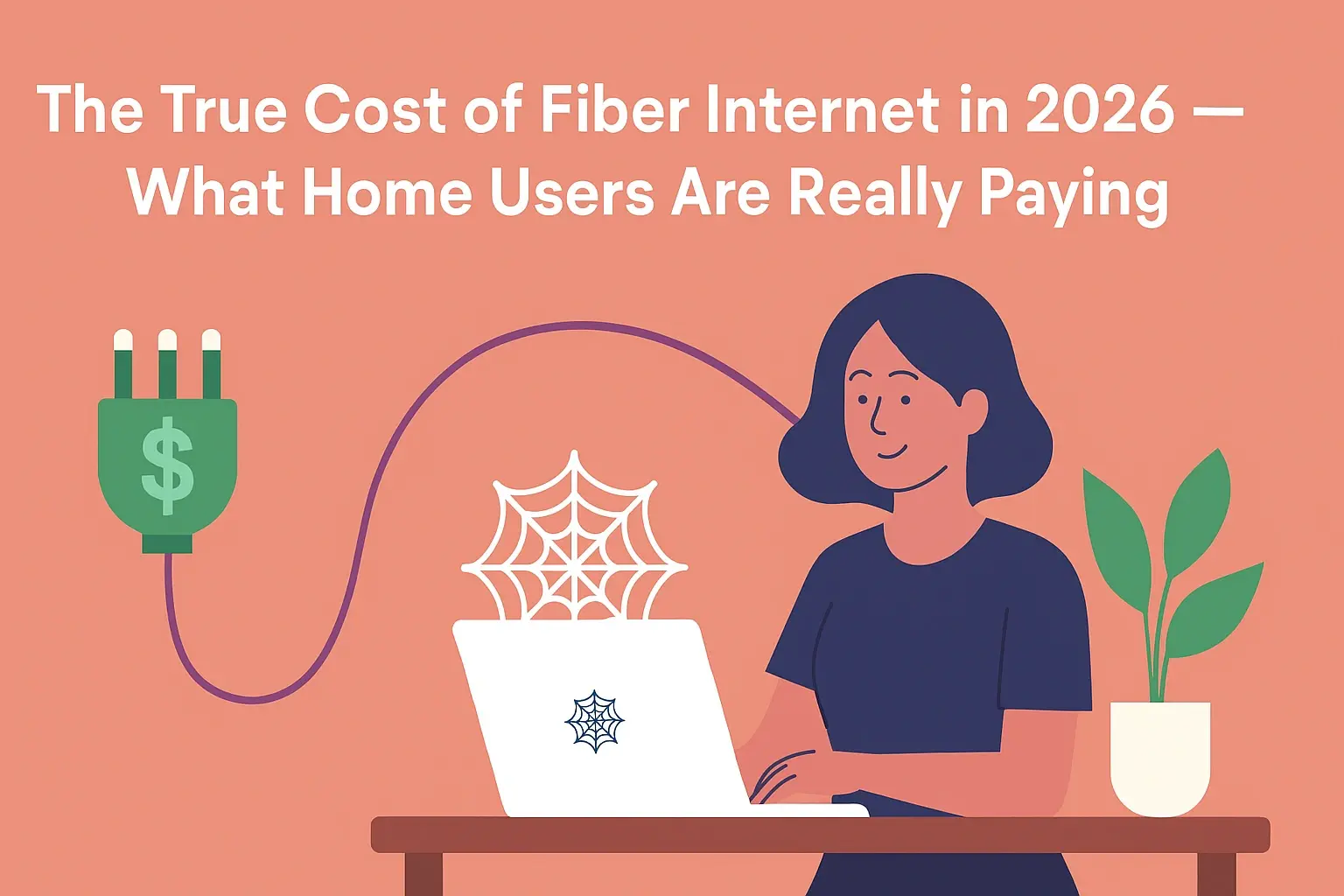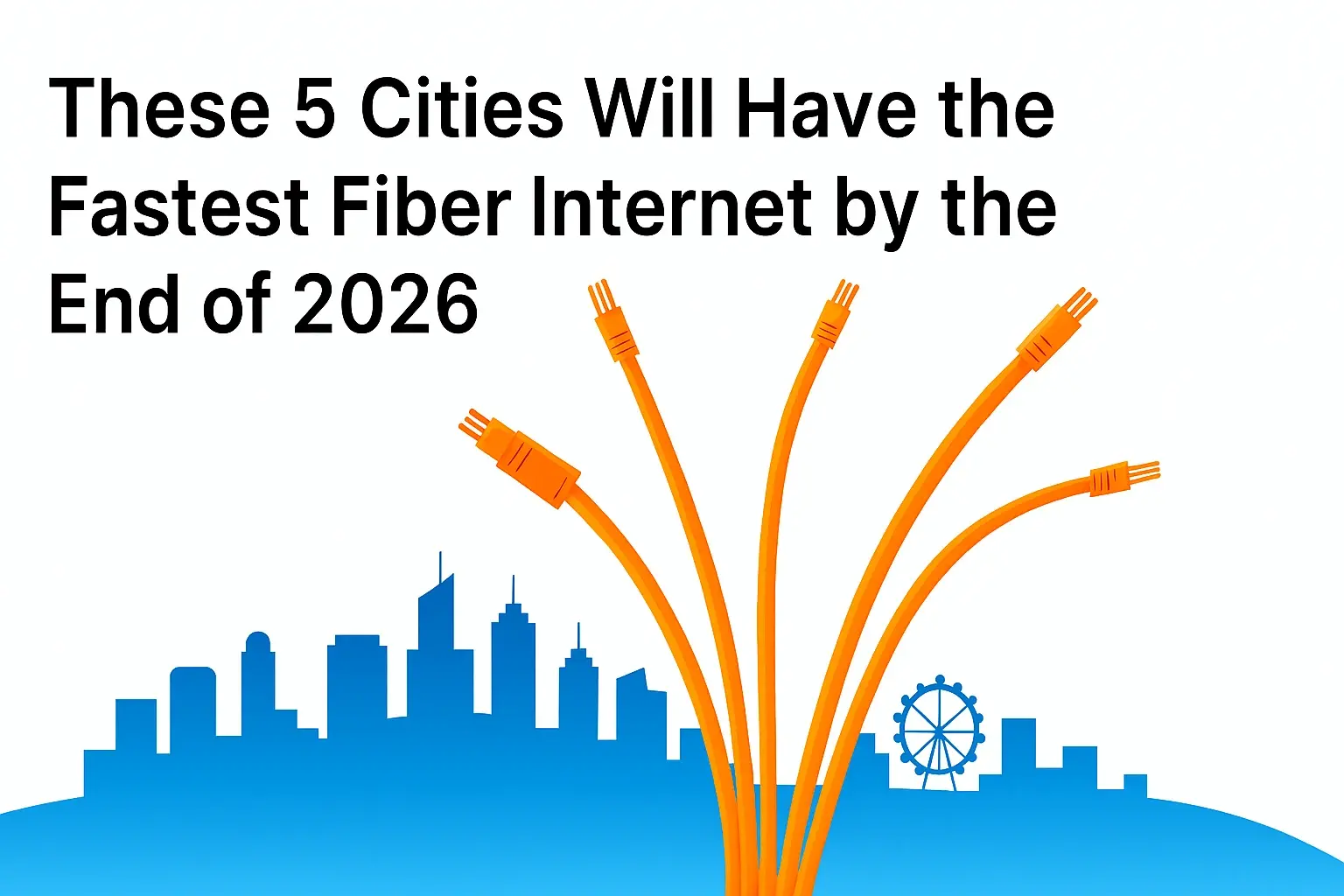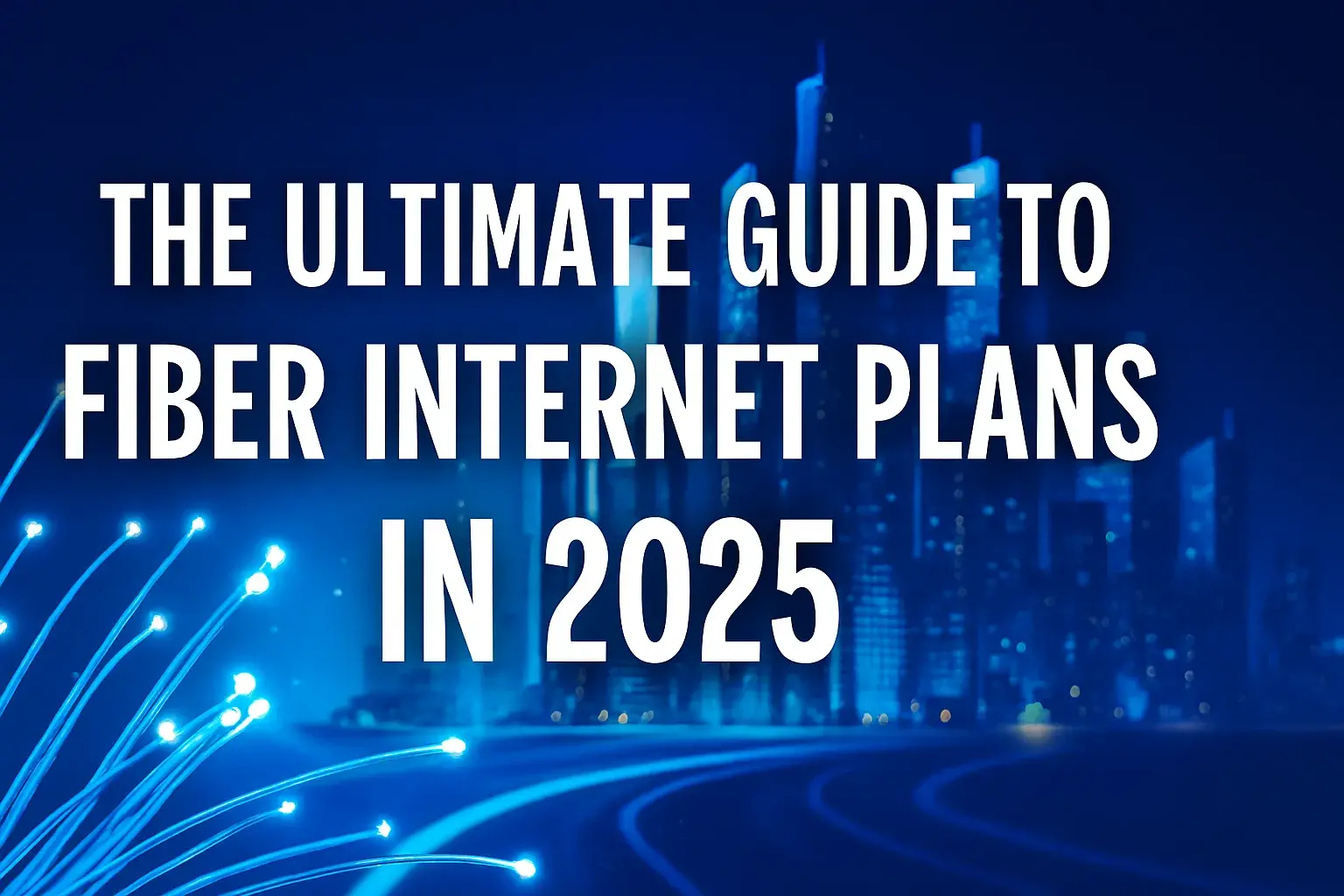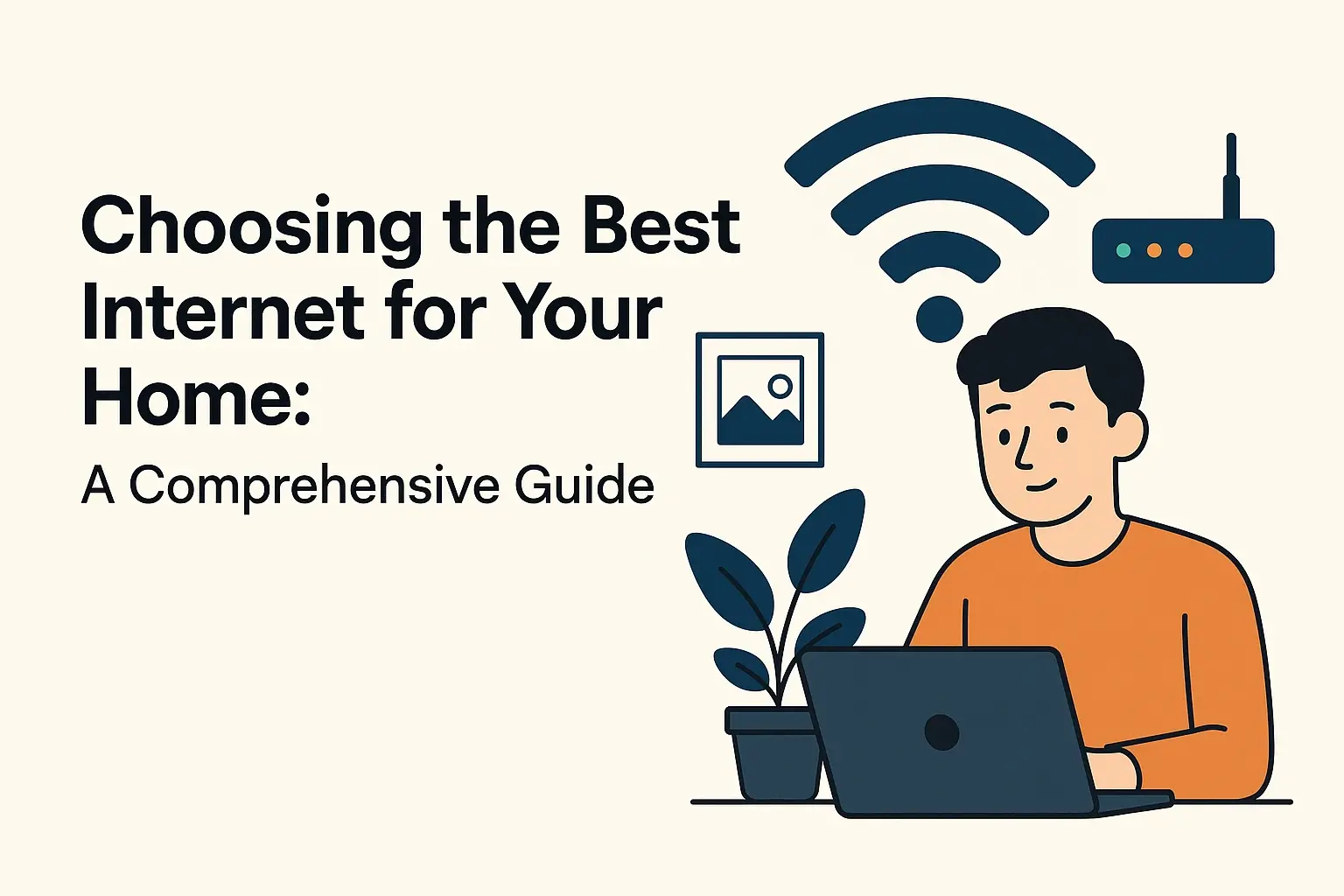Fiber Internet for Residential Areas: Benefits and Drawbacks
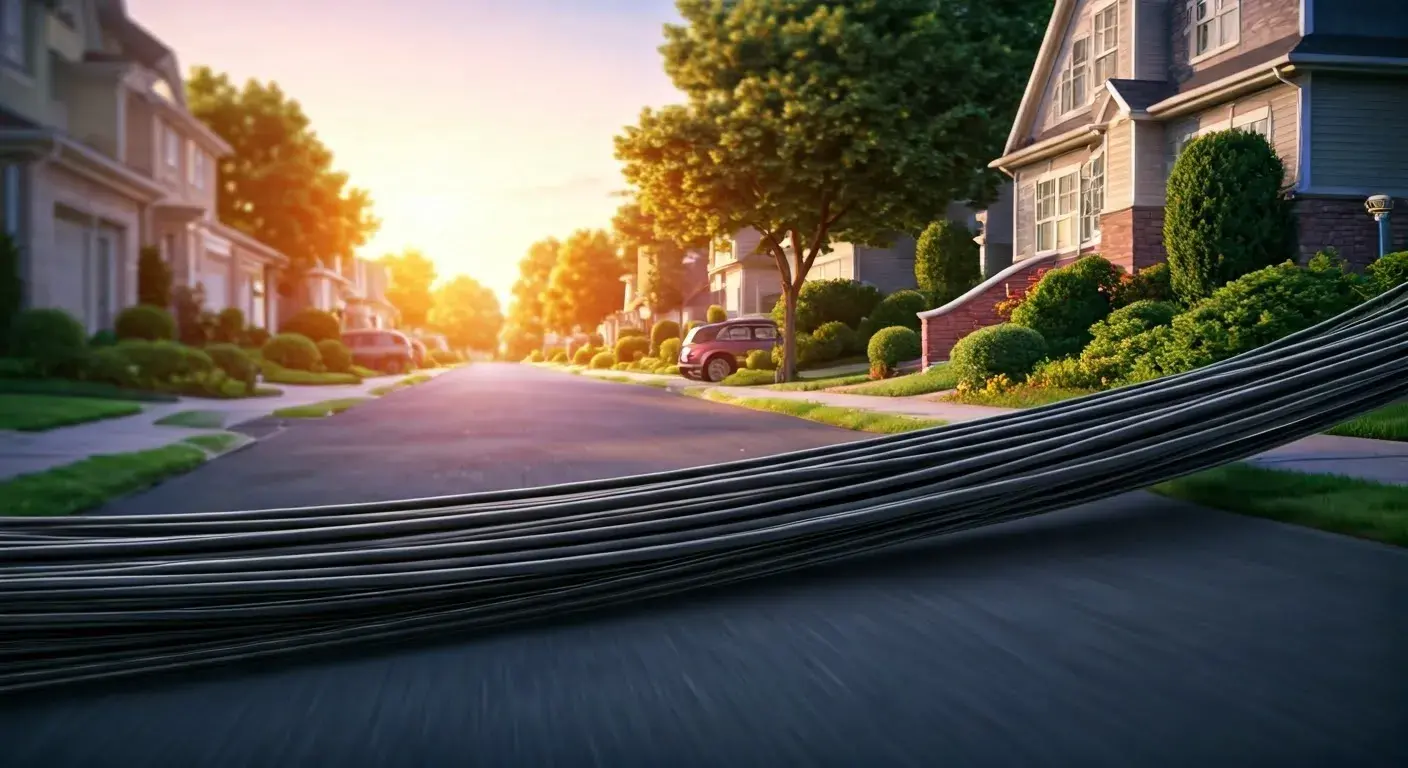
What is Fiber Internet?
Fiber internet utilizes thin strands of glass or plastic to transmit data as pulses of light, offering a significant leap in speed and reliability over traditional copper-based networks. This advanced technology is revolutionizing how we connect, providing the backbone for our increasingly digital lives and homes.
The Compelling Benefits of Fiber Internet for Your Home
In today's hyper-connected world, the demand for robust and high-speed internet is no longer a luxury but a necessity. As more of our daily activities—from remote work and online education to streaming entertainment and smart home management—move online, the quality of our internet connection becomes paramount. Fiber optic internet, often referred to simply as "fiber," stands out as the premier solution for residential connectivity. Unlike older technologies that rely on copper wires, fiber uses light signals transmitted through thin glass or plastic strands. This fundamental difference unlocks a host of advantages that are transforming the residential internet landscape. Let's delve into the significant benefits that make fiber internet the gold standard for modern homes in 2025.
Unparalleled Speed and Performance
The most celebrated advantage of fiber internet is its sheer speed. While traditional cable and DSL connections often struggle to reach speeds beyond a few hundred megabits per second, fiber can easily deliver symmetrical download and upload speeds of 1 Gigabit per second (Gbps) and even higher, with experimental speeds reaching 10 Gbps and beyond. For the average residential user in 2025, this translates to near-instantaneous downloads of large files, seamless 4K and 8K video streaming without buffering, and the ability to participate in high-definition video conferences with crystal-clear quality. Imagine downloading an entire season of your favorite show in seconds, or uploading hours of high-resolution video content in minutes. This level of performance is transformative, enabling a smoother, more efficient, and more enjoyable digital experience for every member of the household. The ability to handle multiple high-bandwidth activities simultaneously without degradation is a hallmark of fiber.
Enhanced Reliability and Stability
Fiber optic cables are inherently more resilient than their copper counterparts. They are not susceptible to electromagnetic interference (EMI) from sources like microwaves, power lines, or even nearby electrical appliances, which can degrade signal quality and cause disconnections on DSL and cable lines. Furthermore, fiber optic cables are less prone to corrosion and water damage, making them more durable and reliable, especially in challenging environmental conditions. This means fewer service interruptions and a more consistent internet experience, which is crucial for critical tasks like remote work, telehealth appointments, and online learning. In 2025, where a stable connection is non-negotiable, fiber's inherent reliability is a significant advantage. Providers are increasingly investing in fiber networks, with reports indicating that fiber connections experience significantly fewer outages compared to other technologies. For instance, a 2025 study by the Telecommunications Industry Association (TIA) noted that fiber networks reported an average of 99.999% uptime, far surpassing other infrastructure.
Future-Proofing Your Home
The digital world is constantly evolving, with new technologies and applications emerging at an unprecedented pace. From the metaverse and advanced virtual reality experiences to the proliferation of smart home devices and the increasing demand for higher-resolution streaming, the bandwidth requirements for residential internet are only going to grow. Fiber optic technology is built to handle this future demand. Its capacity is virtually limitless, meaning that as your internet needs increase, your fiber connection will likely be able to keep up without requiring costly infrastructure upgrades. Investing in fiber today is an investment in your home's digital readiness for years to come. By 2025, many households are already experiencing the strain of older internet technologies on their growing list of connected devices and bandwidth-hungry applications. Fiber provides the headroom needed to embrace future innovations.
Increased Bandwidth for Multiple Devices
Modern households are no longer limited to a single computer or television. With the rise of smartphones, tablets, smart TVs, gaming consoles, smart speakers, security cameras, and a myriad of other Internet of Things (IoT) devices, the number of internet-connected devices in an average home can easily reach dozens. Each of these devices consumes bandwidth, and without sufficient capacity, performance suffers for everyone. Fiber internet's massive bandwidth allows multiple devices to operate simultaneously at peak performance without contention. This means one person can be streaming 4K video, another can be on a video call, a third can be gaming online, and a fourth can be downloading large files, all without experiencing lag or interruptions. This is a critical advantage for larger families or households with multiple users engaged in bandwidth-intensive activities. Data from a 2025 consumer electronics survey indicated that the average connected home now boasts over 25 active devices, underscoring the need for robust bandwidth.
Improved Upload Speeds
Historically, internet plans have prioritized download speeds over upload speeds, a legacy of the era when most internet usage involved consuming content rather than creating or sharing it. However, with the rise of remote work, cloud storage, video conferencing, live streaming, and content creation, upload speed has become increasingly important. Fiber internet typically offers symmetrical speeds, meaning your upload speed is as fast as your download speed. This is a game-changer for anyone who regularly uploads large files to cloud services, hosts video meetings, streams live content, or backs up data to the cloud. For instance, uploading a 5GB video file could take hours on a slow DSL connection but mere minutes on a symmetrical gigabit fiber connection. This parity in speed ensures a smoother and more efficient experience for all aspects of online activity.
Lower Latency for Gaming and Video Calls
Latency, often referred to as "ping," is the time it takes for data to travel from your device to a server and back. High latency can cause frustrating lag in online gaming, making fast-paced action feel unresponsive, and can lead to choppy, delayed audio and video in video calls. Fiber optic cables transmit data using light, which travels at near the speed of light, resulting in significantly lower latency compared to copper-based technologies. For gamers, this means a more competitive and enjoyable experience with quicker reaction times. For professionals and families, it translates to clearer, more natural-sounding video conferences and voice calls. In 2025, with the continued growth of esports and the reliance on remote collaboration tools, low latency is a critical performance metric that fiber excels at delivering. Studies in 2025 consistently show fiber connections achieving latency figures of 10ms or less, compared to 20-50ms or higher for cable and DSL.
Greater Security
Fiber optic cables are inherently more secure than copper cables. Unlike copper, which can be tapped without physical access to the cable (e.g., through induction), tapping into a fiber optic cable requires a physical break or disruption of the light signal, which is easily detectable. This makes fiber networks more resistant to unauthorized access and data interception. While no internet connection is entirely immune to all forms of cyber threats, the physical security advantages of fiber contribute to a more secure online environment for sensitive data and communications. This added layer of security is increasingly valued by both individuals and businesses in 2025.
Environmental Benefits
Fiber optic cables require less energy to transmit data over long distances compared to copper cables. They also do not conduct electricity, which eliminates the risk of electrical surges and lightning strikes damaging network equipment. Furthermore, the manufacturing process for fiber optic cables is becoming more sustainable. While not always the primary driver for residential adoption, these environmental considerations contribute to fiber's status as a more sustainable and future-friendly technology. As sustainability becomes a more prominent factor in consumer choices by 2025, these benefits add to fiber's overall appeal.
Potential Drawbacks of Fiber Internet
While fiber optic internet offers a compelling array of advantages, it's essential to acknowledge its potential drawbacks. Understanding these limitations can help consumers make informed decisions and manage expectations. As fiber deployment continues, these issues are gradually being addressed, but they remain relevant considerations for many residential areas in 2025.
Availability Limitations
The most significant hurdle for widespread fiber adoption is availability. Laying fiber optic cables is a complex and expensive undertaking, requiring extensive trenching, digging, and infrastructure development. As a result, fiber is most commonly found in densely populated urban and suburban areas where the return on investment is higher. Rural and remote areas often lag behind in fiber deployment, or may not have access at all. While government initiatives and private investments are expanding fiber networks, many households, particularly in less populated regions, may not have fiber service options in 2025. This lack of universal availability remains the primary barrier to entry for many potential users.
Installation Costs and Complexity
While many internet service providers (ISPs) offer free or low-cost installation for fiber internet, the underlying cost of deployment is substantial. In some cases, particularly for new builds or areas requiring significant new infrastructure, there might be installation fees. The installation process itself can also be more involved than with DSL or cable. It typically requires a technician to run a new fiber line from the street to your home and install an Optical Network Terminal (ONT) device inside. While this is a one-time process, it can sometimes involve minor disruption to landscaping or property. Understanding the full scope of installation requirements and potential associated costs is important before committing.
Potential for Damage
Although fiber optic cables are durable, they are made of glass and can be susceptible to damage if mishandled or subjected to extreme physical stress. During construction, excavation, or even severe weather events, fiber lines can be accidentally cut or damaged. While repairs are usually prompt, significant damage can lead to temporary service disruptions. Furthermore, the delicate nature of the glass fibers requires careful handling during installation and maintenance to avoid breakage. This is a minor concern for most residential users once installed, but it's a factor in the overall network resilience.
Provider Monopolies and Pricing
In areas where fiber is available, it's not uncommon for there to be only one or a limited number of fiber providers. This can lead to a lack of competition, potentially resulting in higher prices or less incentive for providers to offer competitive deals. While the superior performance of fiber often justifies a higher price point compared to older technologies, consumers should still be aware of pricing structures and look for promotions or bundled services. In 2025, regulatory bodies are increasingly looking at ways to foster more competition in fiber markets to ensure fair pricing for consumers. Researching all available plans and providers is crucial.
Specialized Equipment Requirements
Fiber internet requires specific equipment to convert light signals into usable data. This includes an Optical Network Terminal (ONT) installed at your home, which replaces or complements your traditional modem. While most ISPs provide this equipment, it's proprietary to fiber and cannot be used with other internet technologies. You may also need a compatible router to distribute the high-speed connection throughout your home. While this is standard for any internet service, the specific nature of fiber equipment means you can't simply swap out old modems for new ones if you switch between different internet technologies.
Fiber Internet vs. Other Residential Internet Technologies
To fully appreciate the advantages of fiber, it's helpful to compare it with the other common residential internet technologies available in 2025: DSL, Cable, and Fixed Wireless.
| Feature | Fiber Internet | Cable Internet | DSL Internet | Fixed Wireless Internet |
|---|---|---|---|---|
| Technology | Light pulses through glass/plastic strands | Coaxial cable (shared bandwidth) | Telephone lines (copper wires) | Radio waves from a tower to an antenna |
| Typical Download Speeds | 1 Gbps - 10 Gbps+ | 100 Mbps - 2 Gbps | 10 Mbps - 100 Mbps | 25 Mbps - 1 Gbps (highly variable) |
| Typical Upload Speeds | 1 Gbps - 10 Gbps+ (Symmetrical) | 10 Mbps - 50 Mbps (Asymmetrical) | 1 Mbps - 10 Mbps (Asymmetrical) | 5 Mbps - 100 Mbps (Variable) |
| Reliability | Very High (resists interference) | High (can be affected by network congestion) | Moderate (prone to interference and distance degradation) | Moderate to High (affected by weather and line-of-sight) |
| Latency | Very Low | Low to Moderate | Moderate to High | Low to Moderate |
| Availability | Growing, but limited in rural areas | Widespread in urban/suburban | Widespread, but speeds decrease with distance | Growing, especially in underserved areas |
| Cost | Generally higher, but competitive for speeds | Moderate | Lower | Moderate to High |
As this table illustrates, fiber consistently leads in terms of speed, symmetry, and reliability. While cable offers competitive download speeds and widespread availability, its asymmetrical nature and shared bandwidth can lead to congestion. DSL is the most accessible but offers the lowest speeds and is most susceptible to degradation. Fixed wireless is an option for some underserved areas but can be inconsistent. For those seeking the ultimate performance and future-proofing, fiber is the clear choice.
Making the Switch to Fiber: What to Expect
Transitioning to fiber internet is a straightforward process, but being prepared can ensure a smooth experience. Here's a step-by-step guide to help you navigate the switch.
Researching Providers in Your Area
The first step is to determine which fiber internet providers, if any, service your specific address. You can do this by visiting the websites of major telecommunications companies and using their serviceability checkers. Don't overlook smaller, regional providers, as they may offer competitive fiber plans. Look for independent reviews and ask neighbors about their experiences. Consider factors beyond just speed, such as customer service reputation, contract terms, and any bundled service discounts. In 2025, many consumers are finding success by using third-party comparison websites that aggregate provider information for specific locations.
Understanding Plans and Pricing
Fiber plans are typically categorized by their maximum symmetrical download and upload speeds (e.g., 300 Mbps, 1 Gbps, 2 Gbps). While higher speeds come with a higher price tag, consider your household's typical usage. For a single user or a small household with moderate internet needs, a 300-500 Mbps plan might suffice. For larger households with multiple users, heavy streamers, gamers, or remote workers, a 1 Gbps or higher plan is recommended. Pay close attention to:
- Advertised Speeds: These are often "up to" speeds.
- Contract Length: Are you locked into a multi-year contract?
- Equipment Fees: Is the ONT and router included or an extra charge?
- Installation Fees: Are there any upfront costs?
- Data Caps: Most fiber plans are unlimited, but always confirm.
- Promotional vs. Standard Pricing: Understand the price after introductory offers expire.
In 2025, many providers are offering attractive introductory deals to attract new fiber customers, so be sure to ask about these.
The Installation Process
Once you've chosen a plan and provider, you'll schedule an installation appointment. The process typically involves:
- Site Survey: The technician will assess the best route for the fiber optic cable to enter your home.
- Trenching/Wiring: If necessary, a small trench may be dug from the street to your home, or the fiber may be run aerially.
- ONT Installation: An Optical Network Terminal (ONT) will be installed, usually on an exterior wall where the fiber enters the house. This device converts light signals to electrical signals.
- Router Connection: Your router will be connected to the ONT. If you're using the provider's router, it will be set up for you. If you're using your own, ensure it's compatible with the speeds you've purchased.
- Testing: The technician will test the connection to ensure it's working at the contracted speeds.
The entire process usually takes a few hours. While it can involve some minor disruption, technicians are trained to minimize impact and restore any disturbed landscaping.
Post-Installation Tips
After your fiber internet is up and running, here are a few tips to maximize your experience:
- Test Your Speeds: Use reputable speed test websites (like Ookla Speedtest or Fast.com) to verify you're getting the speeds you're paying for, both wired and wirelessly.
- Optimize Wi-Fi: For the best wireless performance, ensure your router is placed in a central location, away from obstructions and other electronic devices. Consider a mesh Wi-Fi system for larger homes.
- Update Your Router (if applicable): If you're using your own router, ensure it supports the latest Wi-Fi standards (like Wi-Fi 6 or Wi-Fi 6E) to take full advantage of your fiber speeds.
- Understand Your Equipment: Familiarize yourself with your ONT and router settings for basic troubleshooting.
- Keep Contact Information Handy: Save your provider's customer service number for any future issues.
By following these steps, you can ensure a seamless transition and enjoy the full benefits of your new fiber internet connection.
Conclusion: Embracing the Future of Connectivity
Fiber optic internet represents the pinnacle of residential broadband technology in 2025. Its unparalleled speeds, exceptional reliability, and future-proof capacity address the ever-growing demands of our digital lives. While potential drawbacks like availability limitations and installation complexities exist, the transformative benefits—from seamless streaming and lag-free gaming to efficient remote work and robust smart home integration—make it a compelling choice for those who can access it.
As fiber deployment continues to expand, more households will have the opportunity to experience this superior connectivity. By understanding the advantages, considering the potential drawbacks, and following a structured approach to switching, you can confidently embrace the future of high-speed internet. Making the upgrade to fiber is not just about faster downloads; it's about unlocking a more efficient, reliable, and connected experience for your entire household, ensuring you're well-equipped for whatever the digital future holds.
